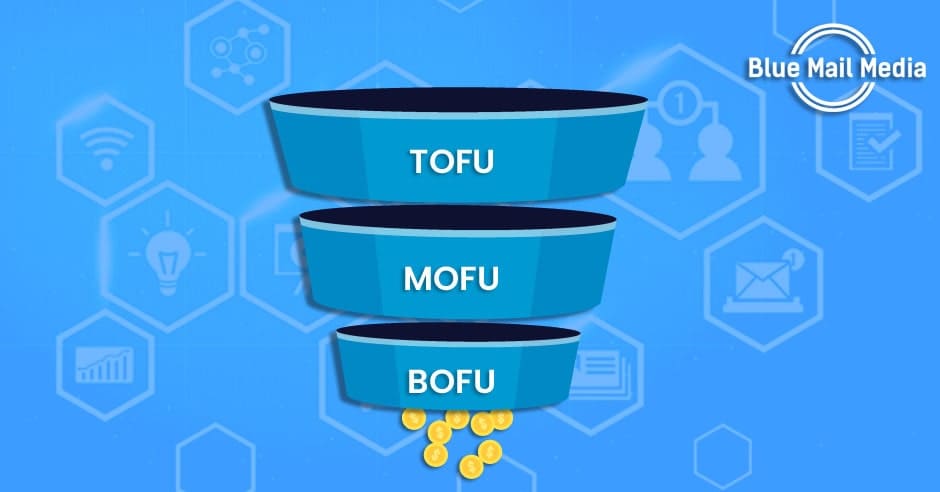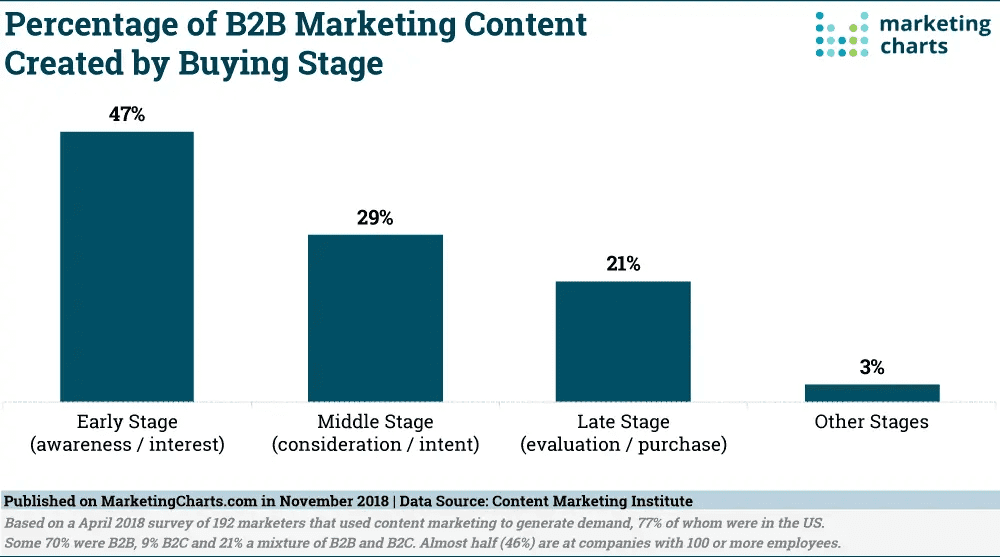Understanding the buyer’s journey is very important for creating the framework of your B2B marketing strategy. Unlike B2C, B2B buyer’s journey is often complex and involves multiple stakeholders along the way. By taking into account your buyer’s journey, you can better predict the outcome of your sales and optimize your conversion rate.
Sounds amazing, right? So let us understand what the buyer’s journey looks like and how you can use this knowledge to enhance your B2B marketing strategies.
What is a buyer’s journey?
A buyer’s journey is the pathway taken by buyers before they make the purchase decision. Understanding buyer’s journey will help you:
- Target the right audience with the right content.
- Nurture the leads.
- Understand what the buyers are doing and help them move from one stage of the buyer’s journey to the next.
Avoid the mistakes of traditional approaches.
The different stages of a buyer’s journey
Although in B2B businesses, several people are involved in the buying process, and the decision-making process is long and a lot more complex, the basic process can be typically divided into three stages.
Stage 1: Awareness or Top Of The Funnel (TOFU) Stage
The awareness stage is the early stage in a buyer’s journey. The buyers at this stage are more than likely unaware of your company and that they have a need that your company could fulfill.
At this stage, the buyers are trying to understand their problem by engaging in broad and surface-level Internet searches and asking their peers.
Stage 2: Consideration or Middle of The Funnel (MOFU) Stage
Once the buyer has defined their problem, they move to the next stage of their journey. During the consideration phase, the buyer begins to look deeper into the available solutions to their problems. They begin to narrow down possible solutions and whether or not a product or service is a good fit for them
Stage 3: Decision or Bottom of The Funnel (BOFU) Stage
Once a buyer has conducted enough research and deepened their knowledge about the available options, they are now ready to select a company or vendor for their problem or need.
This is a crucial stage as this is where your interaction with them and your offerings will help them make the final buying decision.
What type of content should you offer at what stage?
Content is at the core of every strategy you use for marketing. 65% of B2B buyers go through at least 3-7 content pieces before reaching out to the sales team.
This means, by providing relevant content to your buyers based on where they are in their journey, you can enhance their overall buying experience and, in turn, boost your sales.
As per statistics, about 50% of the content is created for the early stages of the buyer’s journey, 29% for the middle, and the rest for the final stages.
Image Source: marketingcharts
But what type of content exactly? Let us take a deeper look at the type of content you can offer at each stage to make the most of your marketing strategies.
Stage 1: At the Awareness Stage
Because prospects are still trying to figure out their challenges at the awareness stage, the content you offer should be primarily educational and broad enough to appeal to industry-wide solutions.
Avoid mentioning your product or service at this stage, as many buyers may find it repulsive. Instead, try to offer as much help as possible to help your prospects understand their problem and the potential solutions.
What content to offer?
Educational content, diagnostic content, thought leadership content, research papers, eBooks, whitepapers, etc.
Stage 2: At the Consideration Stage
Now that you’ve provided helpful content to your prospects to understand their problem, they’re ready to move to the next stage where they will consider the different solutions to their problem. This is the stage where you have to tell your prospects how your product or service solves their problem.
Your content at this stage will contain information about what your company offers without being too salesy.
What content to offer?
Case studies, podcasts, webcast to show how you’ve helped similar companies to overcome their problem. Comparison sheets to offer an honest comparison of your solution to others in the market. Expert guides to help your prospects understand exactly which tools, features, and services they should choose.
Stage 3: At the Decision Stage
At this stage, your prospects will be evaluating your product or service. They may be considering a few other brands as well before making their final decision. You have to make sure they choose you over the others.
What content to offer?
Vendor comparison, product comparison, free trials, product demos, product brochure, live demo, trial download, etc.
Here’s an image to sum-up the type of content offering at each stage.
Image Source: hubspot
Wrap-Up
When putting together your B2B marketing strategy, be sure to address the basic stages in your buyer’s journey. Understanding your buyer’s journey will help you generate more B2B sales leads and ensure that your prospects end their decision stage with you.



